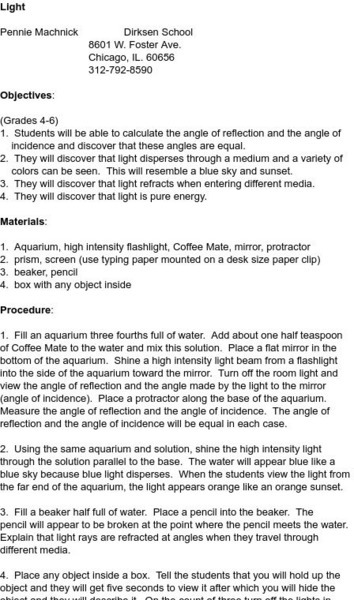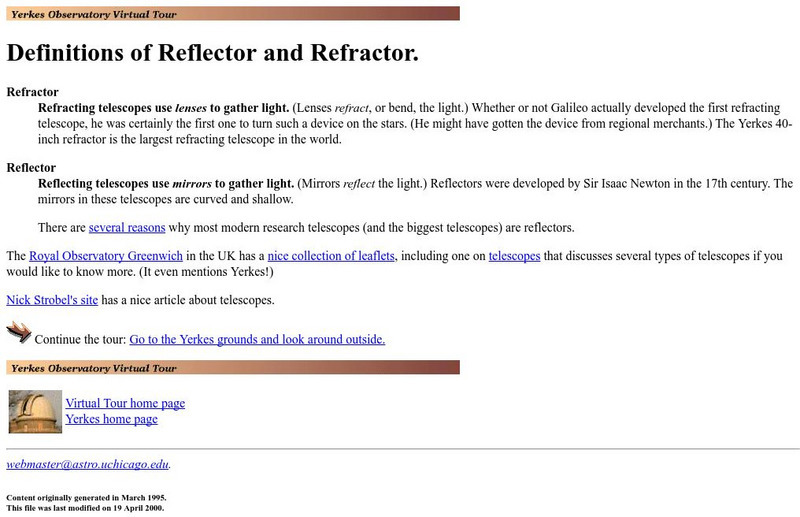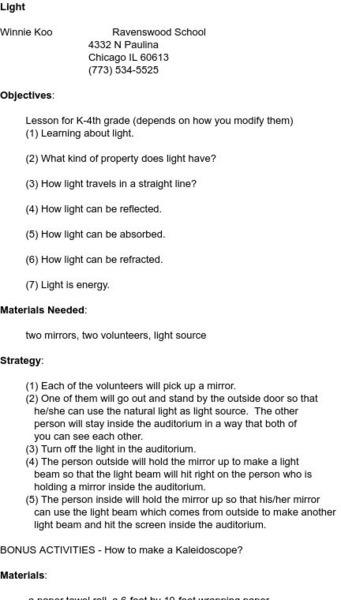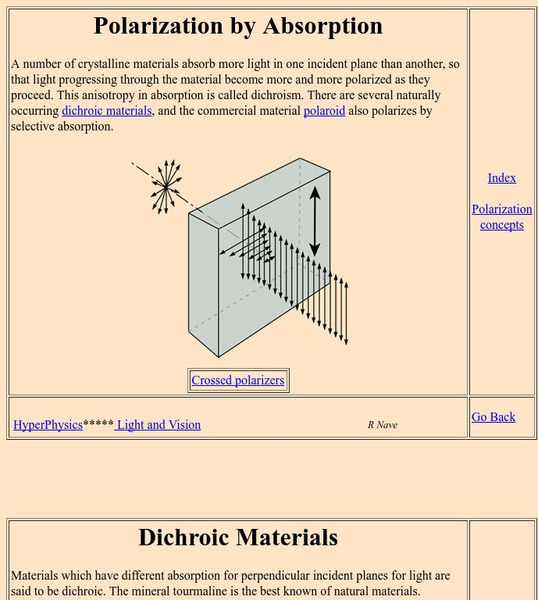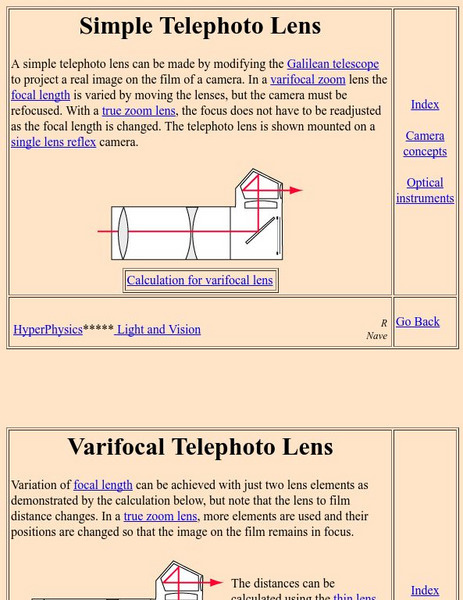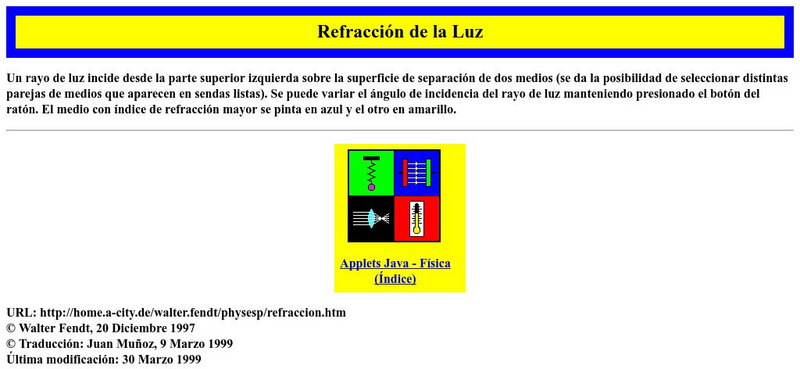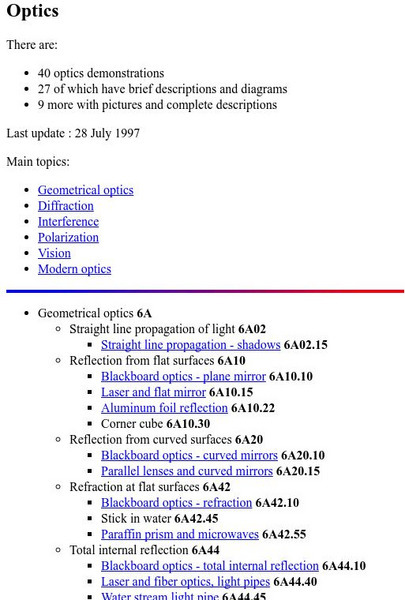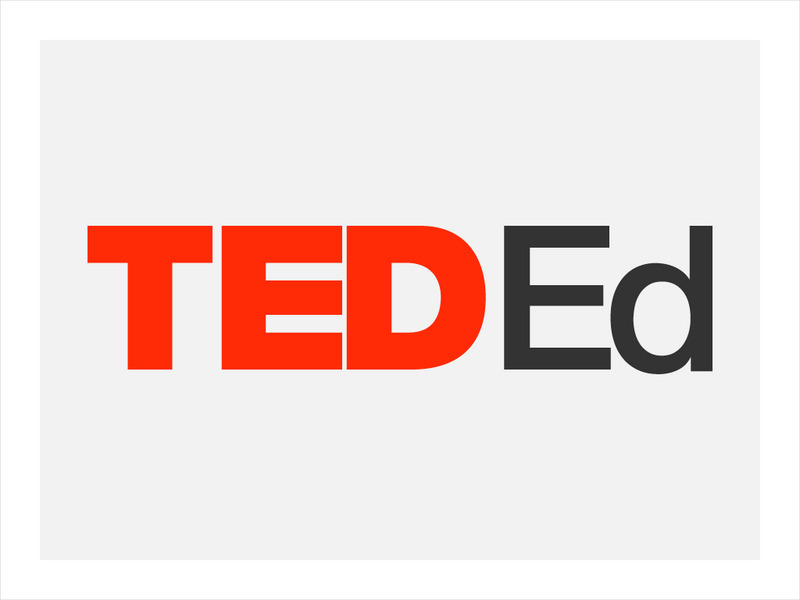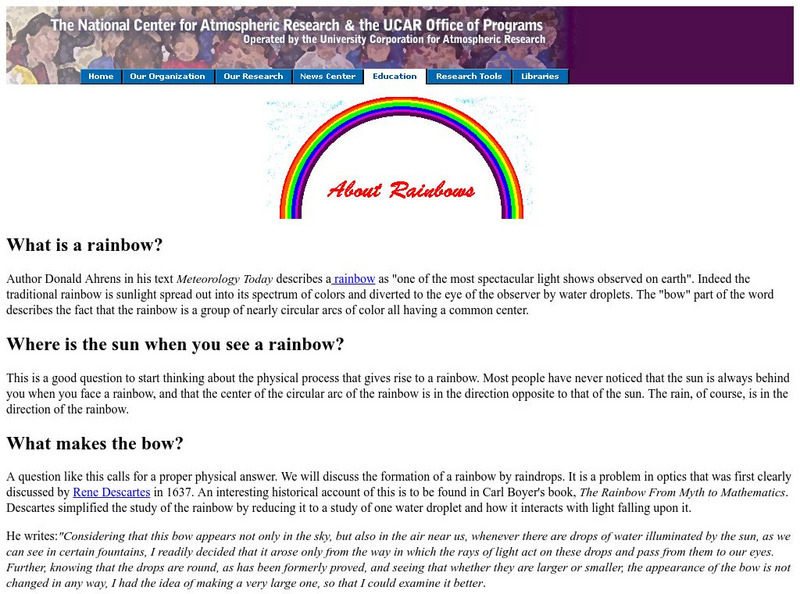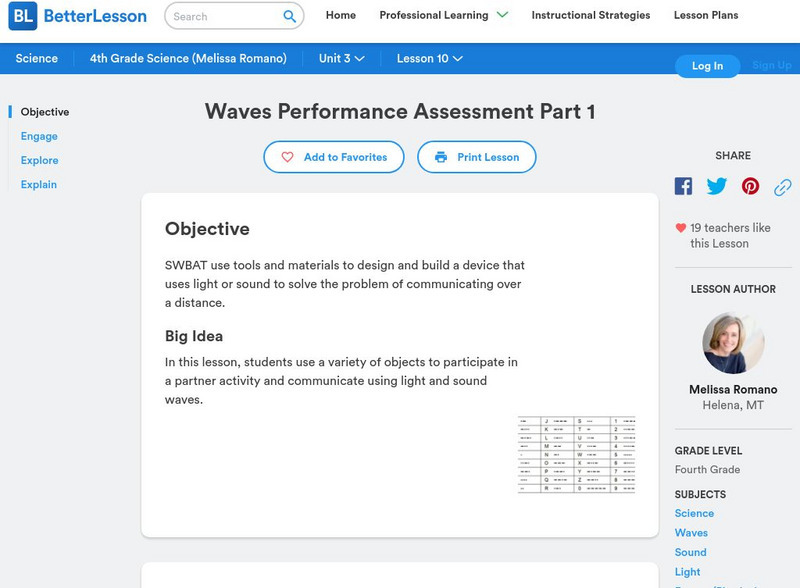Boston University
Bu: Optics: Geometric Optics
Several short descriptions of demonstrations which illustrate principles of geometric optics (many of which focus upon refraction).
Science Education Resource Center at Carleton College
Serc: Mn Step: Why Is the Sky Blue?
Students will learn about refraction and the scattering of sunlight as it enters the atmosphere, which causes the colors in light to separate, giving us blue skies and colorful sunrises and sunsets.
Optical Society
Optical Society of America: Optics for Kids: Watch Tv Upside Down
An experiment to invert a television image using a magnifying lens. Accompanied by an explanation of what's happening.
ClassFlow
Class Flow: Introduction to Light
[Free Registration/Login Required] This flipchart introduces fifth graders to the science of light. Principles such as transparent, translucent, opaque, reflection, and refraction are covered. Concave and convex mirrors and lenses are...
Science and Mathematics Initiative for Learning Enhancement (SMILE)
Smile: Light
For this activity, students actually find the angles of reflection and incidence.
Optical Society
Optical Society of America: Optics for Kids: Guiding Light Optical Fiber
This experiment demonstrates the concept of total internal reflection, using basic materials. Accompanied by a detailed explanation of what's happening, and links to articles on reflection and refraction.
University of Chicago
University of Chicago: Reflector and Refractor
From the Yerkes Observatory Virtual Tour web site. Compares and contrasts reflecting and refracting telescopes. A link from the page leads to a second page which explains why most modern research telescopes are reflecting telescopes.
Science and Mathematics Initiative for Learning Enhancement (SMILE)
Smile: Light (K 4)
This site provides two activities that young scholars can do in class. One uses mirrors to reflect light beams whole another is making a kaleidescope.
Science and Mathematics Initiative for Learning Enhancement (SMILE)
Smile: Light and Vision
Lesson plan should be used for intermediate students. Students work in pairs or groups to create a shoe box that will bend light.
York University
The Joy of Visual Perception: Physics of Visual Stimulus
From an online "book," this particular page describes physics principles related to vision and sight. Keywords are linked to other pages with further information. The role of sunglasses in blocking glare is discussed and explained. A...
Curated OER
Refraction of Light
The meaning and cause of refraction--as well as Snell's law of refraction--are discussed. Includes an interactive problem-solving form in which visitors relate angles of refraction to the incident angle and the indices of refraction.
Utah Education Network
Uen: Enlightening Explorations, Part Ii
This activity engages students in learning about light. Studets will describe how light is produced, reflected, refracted, and separated.
Georgia State University
Georgia State University: Hyper Physics: Microscope
This site from Georgia State University Physics Department provides a discussion of how light refracts through the lenses of a microscope. Demonstrates the parts of a microscope and includes an interactive form in which the magnifying...
Georgia State University
Georgia State University: Hyper Physics: Polarization by Absorption
The operation of Polaroid filters on a pair of sunglasses is shown.
Georgia State University
Georgia State University: Hyper Physics: Telephoto Lens
At this site from Georgia State University Physics Department the operation of a telephoto lens is discussed. The refraction of light through the lens is shown and a link to a calculation page is provided.
Other
Walter Fendt: Refraccion De La Luz
Learn about refraction of light with this simulation. This site is best viewed with Internet Explorer.
Boston University
Bu: Optics Demonstrations: Polarization
Several short descriptions of demonstrations pertaining to polarization principles. Suitable as a supplement for a teacher lesson plan or as an idea-generator for a student project.
Florida State University
Florida State University: Science, Optics & You: E Tienne Louis Malus
Biography of Etienne-Louis Malus (1775-1812), a famous French mathematician and physicist, best known for his work in double refraction and in polarization.
TED Talks
Ted: Ted Ed: How Do Glasses Help Us See?
Today, glasses help millions of people with poor vision be able to see clearly. But how? Andrew Bastawrous and Clare Gilbert help unravel the answer by explaining refraction- the ability of a transparent medium, like glass, water, or the...
University Corporation for Atmospheric Research
Ucar: About Rainbows
This site from the University Corporation of Atmospheric Research provides an illustrated article about the phenomenon of rainbows.
Georgia State University
Georgia State University: Hyper Physics: Total Internal Reflection
This physics department site provides a definition and explanation of the phenomenon of total internal reflection. Includes a diagram and an equation for calculating the critical angle for light approaching a surface.
University of Wisconsin
The Why Files: Make a Rainbow
Make a rainbow by changing angles and placement of the observer, the sun, and the rain.
Better Lesson
Better Lesson: Waves Performance Assessment Part 1
Students will use a variety of objects to participate in a partner activity and communicate using light and sound waves. Resources include a video, pictures and videos of the lesson in action, and examples of student work.
Exploratorium
Exploratorium: Science Snacks: Convection Currents
Get a visual of convention currents with this activity. This activity allows students to observe the currents by bending light due to cold and warm water.




